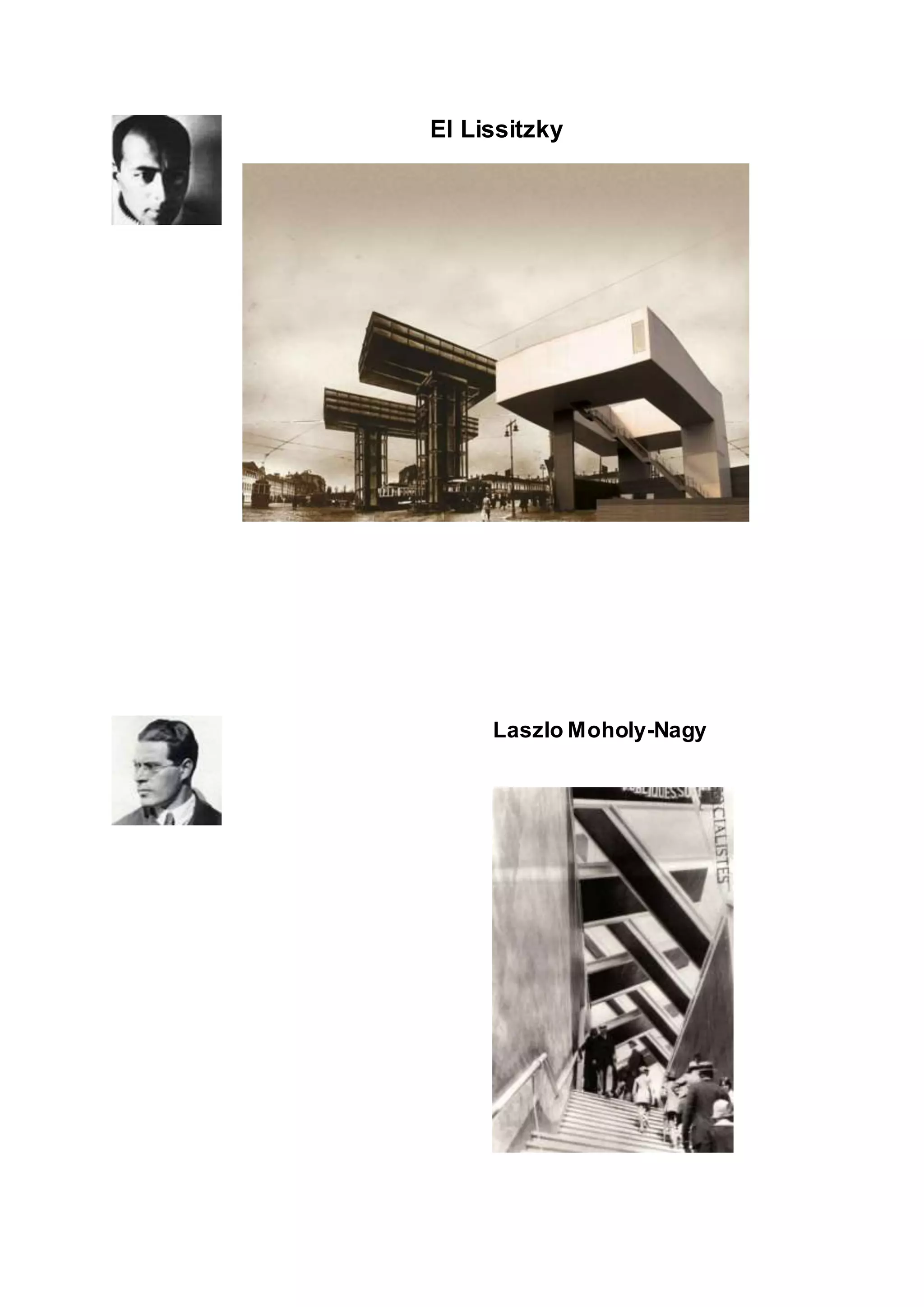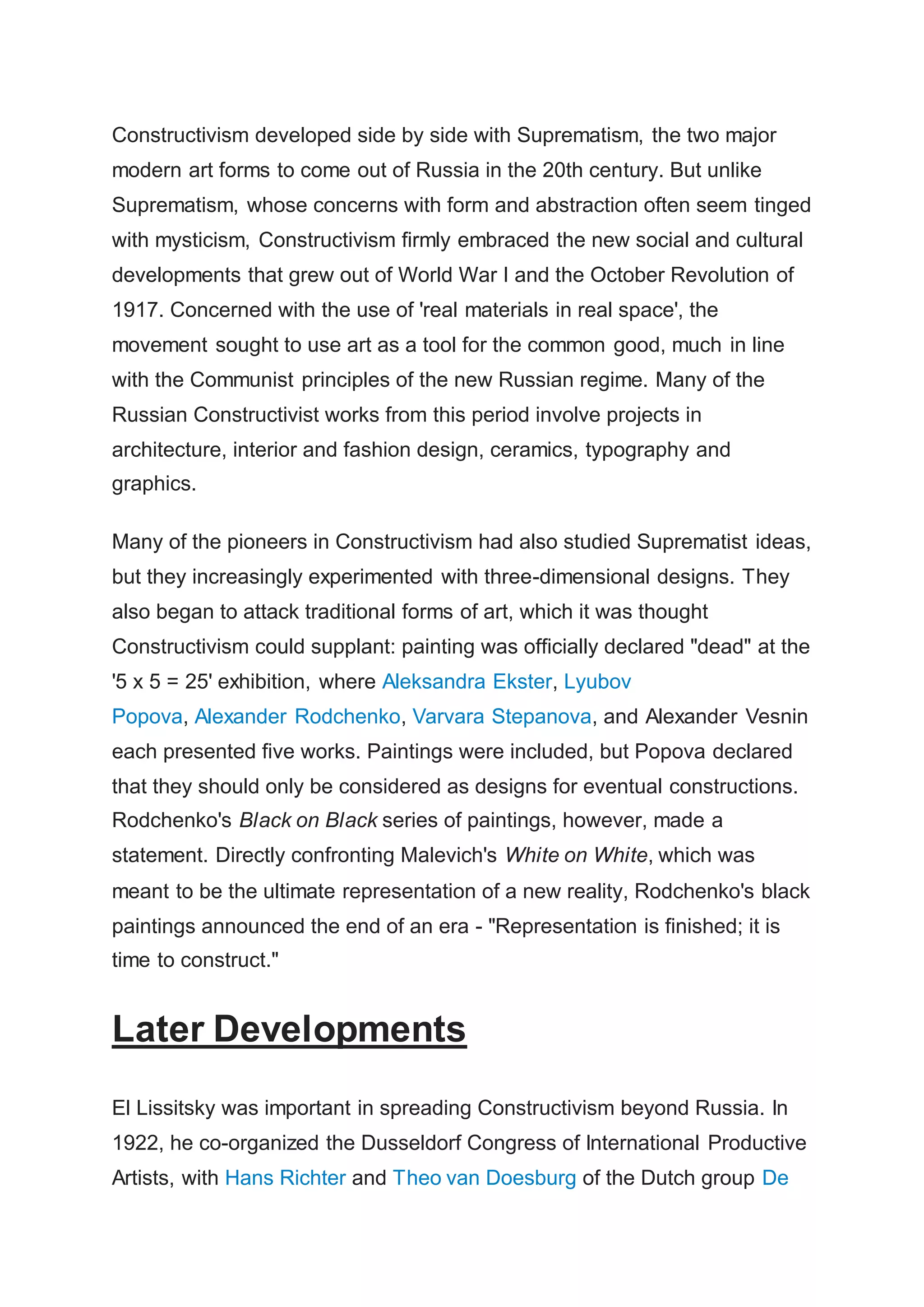Vladimir Tatlin is considered the founder of Constructivism for his 1919 model of the Monument to the Third International. Constructivism proposed replacing artistic composition with construction, analyzing materials to design functional objects for industry. Key artists included Tatlin, Rodchenko, Popova and Stepanova. Constructivism spread beyond Russia through the 1922 Dusseldorf Congress and the work of El Lissitzky in Germany, influencing Bauhaus and later American sculpture.










